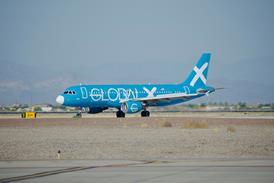NATO aircraft and missiles attacking targets in Yugoslavia caused significant collateral damage to civilian targets for the first time last week, as hundreds more aircraft were sent from the USA to Europe to join the campaign. The heaviest raids yet were mounted against Serbian capital Belgrade and several other cities across the country.
The first significant loss of life occurred when a cruise missile hit a residential block during an attack on the town of Aleksinac early in the war, killing 26, according to Yugoslav sources.
At least nine civilians died on 12 April when a guided weapon, thought to be a GBU-15 from a Boeing F-15E, hit a bridge near Leskovac as a train was crossing. The bridge was hit by a second weapon shortly after, destroying three of the train's carriages.
Most ominously for NATO, a large group of Kosovar refugees was killed on 14 April during an air attack on a refugee convoy, mistaking it for military vehicles, near the town of Djakovica. Serb sources put the number of casualties at 64. NATO has acknowledged that the civilians were hit as the result of pilot error, but stresses that the incident will not inhibit the progress of attacks on Yugoslav forces in the area.
On 15 April, NATO carried out its strongest raids, in two weeks of assaults, on Montenegro, attacking a military airfield and airport in capital Podgorica, a subterranean military base and Yugoslav navy base.
Gen. Wesley Clark, NATO Supreme Commander, has requested a further 300 aircraft be deployed to Europe from the USA to support the air attack.
By 14 April, the US Army's Boeing AH-64 Apache helicopters had not arrived in Albania, although advance ground support units for the helicopters were in theatre.
The first Fairchild A-10s had arrived, and were in operation in Kosovo. By 15 April, NATO had flown almost 6,000 sorties, including 1,687 strike missions.
Source: Flight International























